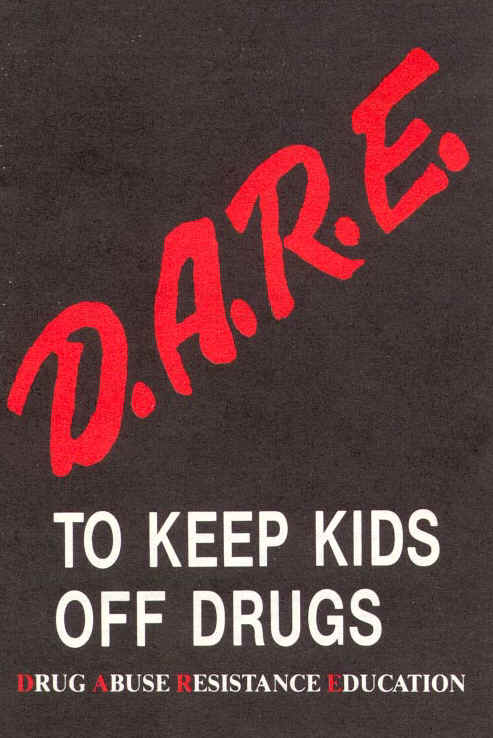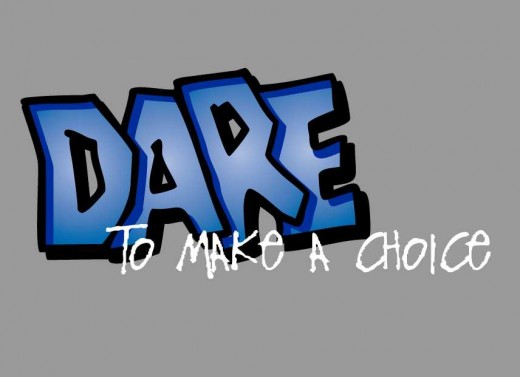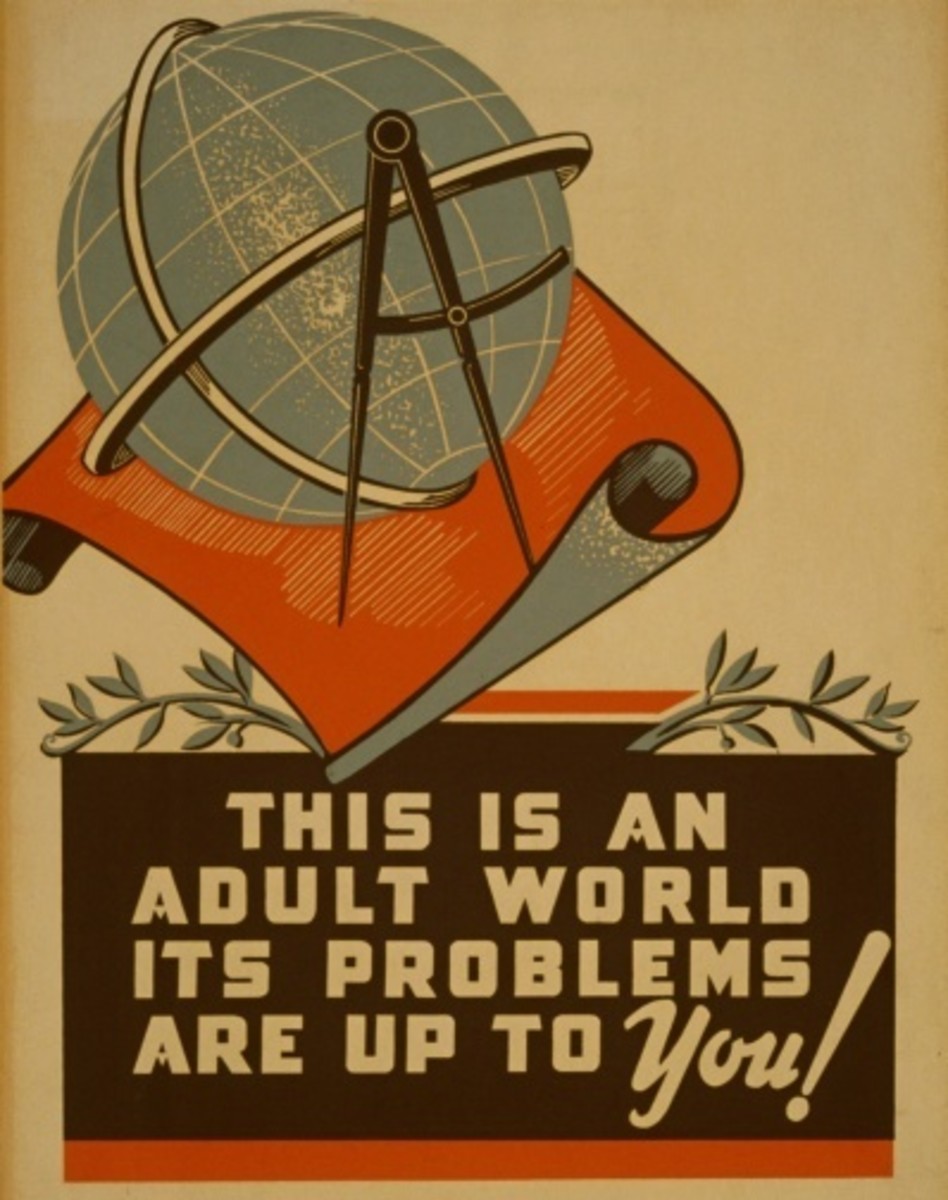The Ebb and Flow of the D.A.R.E. Program

If you were in elementary school during the 1980's, you probably remember the D.A.R.E. program. Started in 1983, this school-based program was designed to educate children about the dangers of drugs and violence. What you might remember about the program is having a police officer come to your classroom to teach you about drugs, gang membership and violence prevention. If you ask your own kids about this today, they will likely tell you something like, "yeah, I think we had something like that last year".
That's because D.A.R.E. is still around in schools and communities today. In fact, they are regularly re-vamping and re-working their programs in order to be able to keep their information current with modern issues facing children. (For example, they recently altered their program to include information about the use of prescription medications as recreational drugs, a widespread problem in schools today.) The overarching goal of the organization, which is to get kids comfortable with law enforcement in order to build stronger and safer communities, is still being met in schools today. So why don't we hear as much about D.A.R.E. as we did when we were in school?
There are many different reasons that D.A.R.E. isn't as heavily promoted and "in the public eye" as it once was. There has been an ebb-and-flow to D.A.R.E. over the years. Sometimes the program makes news headlines. Other times people who bother to think about it wonder if it even still exists. But it doesn't really matter whether the organization is in "ebb" or in "flow" mode; it continues operating to meet its goals regardless of whether community attention is focused on its efforts or not.
Here are some of the reasons that there is an ebb-and-flow to the attention we give D.A.R.E.:
- Popularity of the program. The popularity of this program has varied over the years. It was originally a highly popular program which parents, community leaders and the media strongly supported. In the 1990's, it decreased in popularity because of reports that anti-drug programs were not successful in deterring drug use among children. The changing popularity of the program (and even the criticism of it) caused media attention that made people more aware of the D.A.R.E. program.
- Personal interest. When you were in elementary school, you were interested in D.A.R.E. because you were a kid and the officers were coming to your classroom to talk to you. If your kids speak to you about the fact that D.A.R.E. officers came to see them, you'll be interested in the topic again. But for the most part, the intervening years will find you not thinking twice about D.A.R.E. If you're not thinking about it, you don't notice the news.
- Changes in the focus of schools. The implementation of nationwide standardized testing and other curriculum changes have altered the focus of many schools. Although schools do still recognize the importance of anti-drug and anti-violence programs, they don't always have the time to focus on this type of education. There are only so many hours in a school day and some programs, like guest speakers from D.A.R.E. have to be cut to accommodate the change in focus of schools.
- Political climate. When politics change, programs change as well. Legal acts that make anti-drug programs a focus can bring attention back to D.A.R.E. Likewise, when the politics of the country are focused on other aspects of education and non-education politics, D.A.R.E. may lose attention by the general public.
- Interest of officers in the program. You can't just walk into D.A.R.E. and start working with them. To become a D.A.R.E. officer requires eighty hours of training at a minimum (with another 40 recommended for those officers that are teaching at the high school level). Like with any other program, the D.A.R.E. program sees an ebb and flow in the level of interest that officers have in participating in the program.
- Availability of alternative programs. D.A.R.E. is a well-known name but it's not the only anti-drug, anti-violence, community-building organization in existence. Schools have their own programs. Communities have local organizations. Other nationwide organizations exist to raise awareness of these issues. Because of this, we sometimes see a decrease in D.A.R.E. presence that doesn't translate to a decrease in the presence of anti-drug education in the classroom.
- Success of alternative methods to drug prevention. In addition to the general availability of other programs, there is a specific difference between some programs and D.A.R.E. For example, there are organizations working towards the decriminalization of drugs whereas D.A.R.E. has a no-tolerance approach to drug use. When organizations with opposing approaches gain success, interest in D.A.R.E. can decrease.
- D.A.R.E. is well-established. Because D.A.R.E. is a well-known organization that has been around for twenty years, it doesn't have to fight for media attention. It doesn't have to promote itself excessively to get the attention of the general public because the general public already knows it exists. It doesn't have to send out a slew of press releases because it has decades of proof of its services. And the media doesn't really have a reason to focus on the program because it's just doing what it does - drug awareness.
- Funding changes. When D.A.R.E. does start fighting for media attention is likely when the organization needs additional operating funds. The fact of the matter is that it costs a lot of money to do the kind of training and services that the organization provides. Changes in funding change how much media attention the organization needs as well as how many programs they can offer to students.
D.A.R.E. has been around for a long time. If you have the chance to stop into a classroom where a D.A.R.E. officer is giving a presentation, you'll find that the education they provide is significantly different from what we saw back in the 1980's. That's because there are different problems facing twenty-first century children than there were facing us when we were kids. But the program still maintains many of the same goals. And it's still out there working to achieve those goals, even if you don't hear a lot about it these days.
Question to readers: Do you believe that the D.A.R.E. program is successful in drug and violence prevention?





